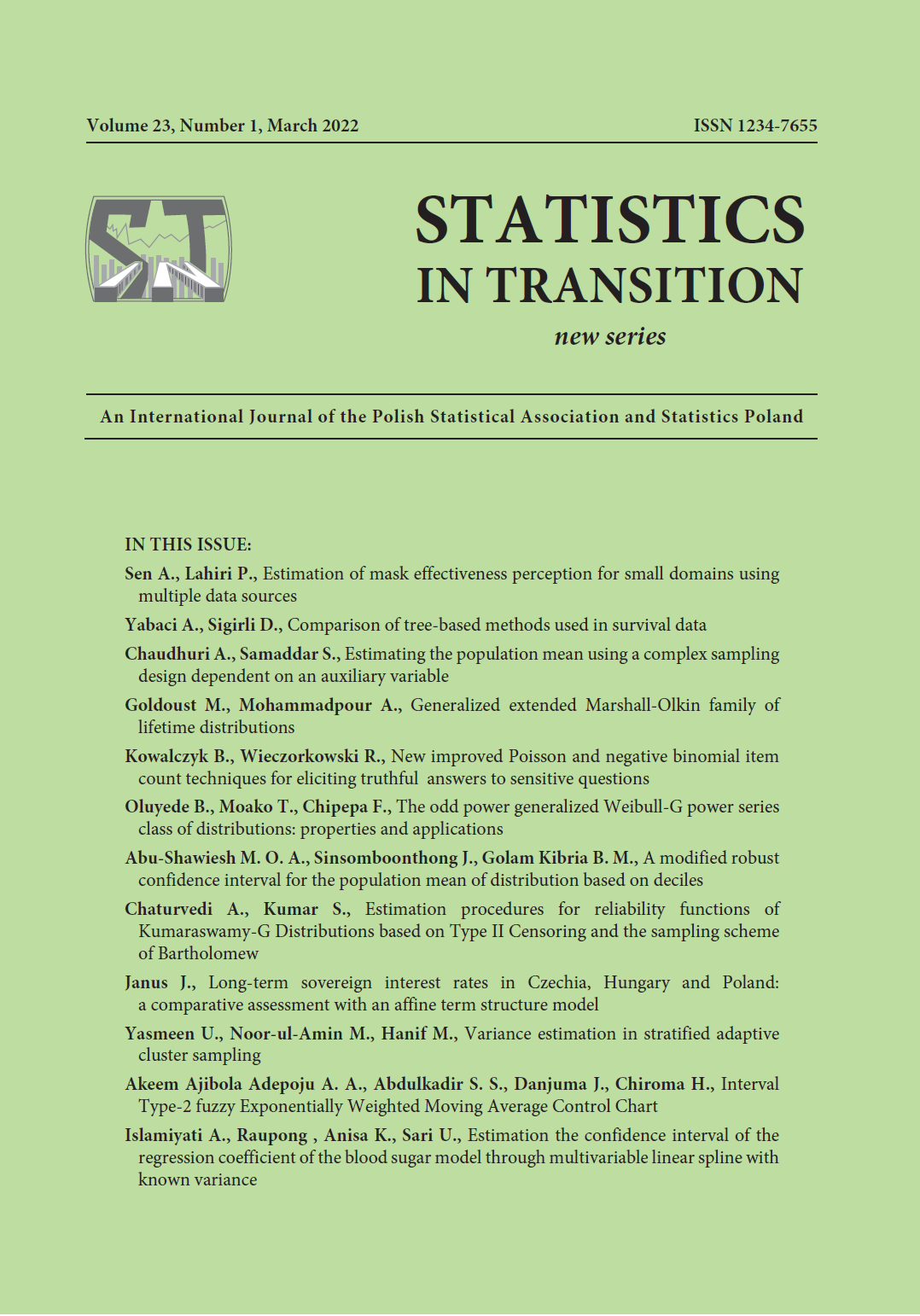ARTICLE
ABSTRACT
Survival trees and forests are popular non-parametric alternatives to parametric and semiparametric survival models. Conditional inference trees (Ctree) form a non-parametric class of regression trees embedding tree-structured regression models into a well-defined theory of conditional inference procedures. The Ctree is applicable in a varietyof regression-related issues, involving nominal, ordinal, numeric, censored, as well as multivariate response variables and arbitrary measurement scales of covariates. Conditional inference forests (Cforest) consitute a survival forest method which combines a large number of Ctrees. The Cforest provides a unified and flexible framework for ensemble learning in the presence of censoring. The random survival forests (RSF) methodology extends the random forests method enabling the approximation of rich classes of functions while maintaining generalisation errors low. In the present study, the Ctree, Cforest and RSF methods are discussed in detail and the performances of the survival forest methods, namely the Cforest and RSF have been compared with a simulation study. The results of the simulation demonstrate that the RSF method with a log-rank score distinction criteria outperforms the Cforest and the RSF with log-rank distinction criteria.
KEYWORDS
tree-based methods, conditional inference trees, conditional inference forests, random survival forests
REFERENCES
Breiman, L., Friedman, J., Olshen, R. and Stone, C., (1984). Classification and regression trees. Wadsworth Int. Group, 37(15), pp. 237–251.
Ciampi, A., Thiffault, J., Nakache, J. P. and Asselain, B., (1986). Stratification by stepwise regression, correspondence analysis and recursive partition: a comparison of three methods of analysis for survival data with covariates. Computational statistics & data analysis, 4(3), pp. 185–204.
Gerds, T. A., Schumacher, M., (2007). Consistent estimation of the expected Brier score in general survival models with right-censored event times. Biometrical Journal, 48(6), pp. 1029–1040.
Hothorn, T., Bühlmann, P., Dudoit, S., Molinaro, A. and Van Der Laan, M. J., (2006a). Survival ensembles. Biostatistics, 7(3), pp. 355–373.
Hothorn, T., Hornik, K. and Zeileis, A., (2006b). Unbiased recursive partitioning: A conditional inference framework. Journal of Computational and Graphical statistics, 15(3), pp. 651–674.
Hothorn, T., Hornik, K. and Zeileis, A., (2005). party: A laboratory for recursive part (y) itioning. R package version 0.3-2.
Ishwaran, H., Kogalur, U. B., Blackstone, E. H. and Lauer, M. S., (2008). Random survival forests. The annals of applied statistics, 2(3), pp. 841–860.
Ishwaran, H., Kogalur, U. B., (2019). randomForestSRC: Fast unified random forests for survival, regression, and classification (RF-SRC). R Package Version, 2(1).
Mogensen, U. B., Ishwaran, H. and Gerds, T. A., (2012). Evaluating random forests for survival analysis using prediction error curves. Journal of statistical software, 50(11), 1.
Safavian, S. R., Landgrebe, D., (1991). A survey of decision tree classifier methodology. IEEE transactions on systems, man, and cybernetics, 21(3), pp. 660– 674.
Segal, M. R., (1988). Regression trees for censored data. Biometrics, pp. 35–47.
Team, R. C., (2013). R: A language and environment for statistical computing.
